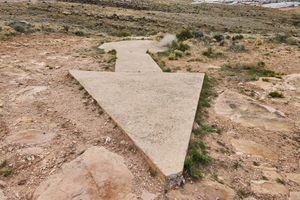
Carrying mail was the first commercial application of air travel, and in the early 1920s the federal government established a network of beacons for airmail navigation. Officially called Beacon Stations, these consisted of a concrete arrows—originally painted yellow—that pointed easterly on east-west routes and northerly on north-south routes. They also included a brilliant light on a steel tower about 50 feet high so that planes could follow a course from light to light after dark. Otherwise, in the absence radar—and with only primitive radio, at best—night flying was hazardous and…



